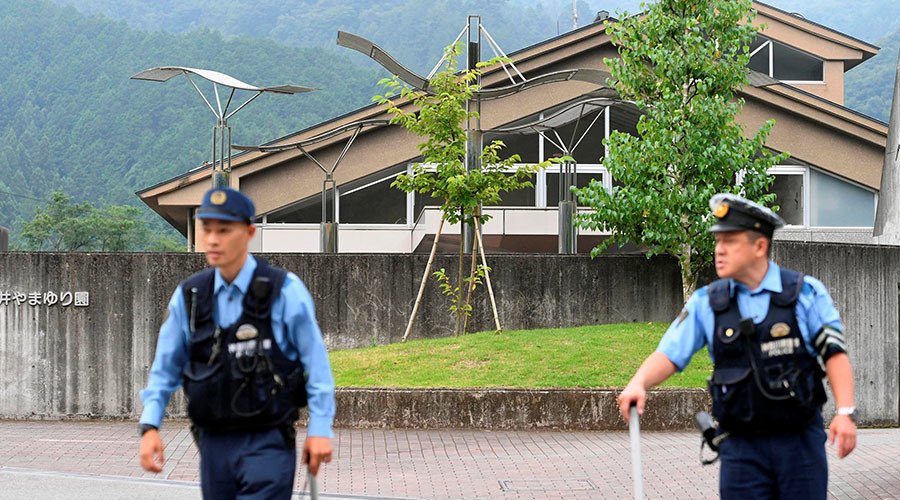
Police officers and rescue workers are seen in a facility for the disabled, where at least 19 people were killed and as many as 20 wounded by a knife-wielding man, in Sagamihara, Kanagawa prefecture, Japan, in this photo taken by Kyodo July 26, 2016. © Kyodo / Reuters
A suspect detained after a stabbing attack in Japan was carrying a bag full of knives and other sharp tools, according to the latest reports. He was allegedly able to kill and injure a third of the patients at a facility for the disabled near Tokyo.
The stabbing attack took place at the Tsukui Yamayuri En (Tsukui Lily Garden) facility in the city of Sagamihara in Japan’s Kanagawa Prefecture on Tuesday at around 2:30 am local time, leaving at least 19 people dead and 26 injured, 20 critically, local media quoted police and firefighters as saying.
The dead victims, who ranged from 18 to 70 years of age, included nine men and ten women, according to reports citing the local fire department.
Police arrested Satoshi Uematsu, 26, after he turned himself in stating: “I did it.”
“It’s better that the disabled disappear,” the suspect was reportedly quoted by police as saying.
When Uematsu turned up at the police precinct, he had bag with him full of knives and other sharp tools, many of which were covered in blood, according to local media reports. He was later identified as a former employee of the facility.
During questioning, Uematsu admitted to smashing a window with a hammer to get inside the facility.
The police are still looking into the motive behind the attack.
One report said that Uematsu had been fired from his job and wanted revenge.
However, Kyodo news agency reported that Uematsu resigned from his post at the facility in February, citing personal matters. It also said that he had worked there since December 2012 and after his resignation he had delivered an incoherently written letter to Tadamori Oshima, the Speaker of the House of Representatives of Japan.
The 30,000-square-meter facility can accommodate up to 160 people, but only had 149 residents at the time of the attack.
One former employee told Japanese television station TBS that the patients at the facility were truly helpless. “They are truly innocent people. What did they do? This is shocking,” she said.
Governor of Kanagawa Prefecture Yuji Kuroiwa promised to take measures to ensure that nothing like this could be repeated. “I offer my most sincere apologies and condolences. We will work hard that this does not happen again,” he said at a press conference.
Police do not have any evidence indicating that the attacker was connected to any radical Islamic groups, the Chief Cabinet Secretary of Japan, Yoshihide Suga, told journalists on Tuesday.
“Currently, the police did not send over any evidence that would point to the suspect’s connection to any of the Islamist groups,” he said.


Comments
Post a Comment